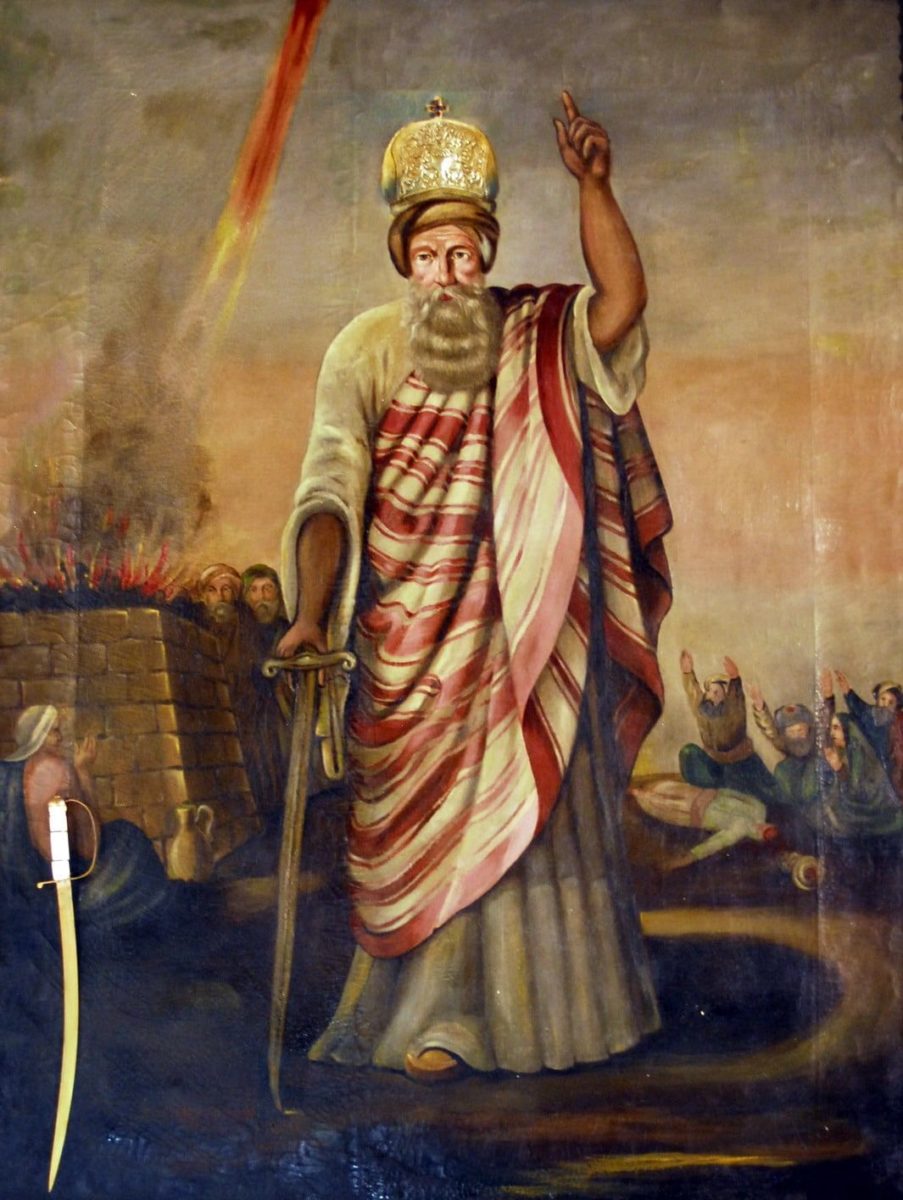The legend of the martyr St Ursula and her 11,000 virgins has fascinated people for many years, but who was St Ursula?

Saint Ursula Biography
Historians believe that this virgin lived between 300 and 600 AD, the same time as St George, another Christian martyr. It is believed that she was of Romano-British descent and that before her untimely death she was engaged to a man of high rank and travelled to marry him.
Unfortunately, Ursula and her fellow travellers (said to number 11,000 virgins) found themselves in the city of Cologne, Germany, where they were cruelly slaughtered for refusing to copulate or marry the invading Huns, a nomadic race from Central Asia who conquered much of Europe in the 4th century.

While some historians have argued that Ursula made a sacred pilgrimage across Europe to Rome before her marriage, it is also said that the ships on which the women were travelling were caught in a storm and wrecked far from their destination.
The survivors were captured and brutally beheaded, while Ursula, their leader, was killed by an arrow fired by the Hun leader.
One of the most popular legends tells of Ursula as the princess and daughter of King Dionotus, ruler of Dumnoia, the region now known as Dorset, Devon and Somerset.
It is said that Dionotus received a request from Conan Meriadoc, ruler of Armorica, to provide wives for the settlers of the newly formed region of Armorica (now known as Brittany).
Dionotus dutifully sent Ursula as a bride to Conan and thousands of other maidens for his men, but sadly the women never arrived.
Here is the video story of St Ursula and her 11,000 maidens:
St Ursula History
According to legend, St Ursula was the daughter of the Christian king Dionotus in 5th century Britain. She was a beautiful, intelligent, outgoing and kind girl. Ursula was deeply spiritual and dedicated herself to God from an early age, choosing to remain a virgin out of love for Christ.

In those days, young women did not choose their own husbands, their fathers decided who they would marry. A powerful pagan king asked Ursula’s father to marry his son Ethereus.
The pagan king sent ambassadors to Ursula’s father, offering large sums of money and other promises if the marriage would take place.
Ursula’s father was very afraid for three reasons: he was afraid of the violent reaction of the other king; he did not believe that Ursula would agree to the marriage; and both he and Ursula would prefer a Christian marriage.
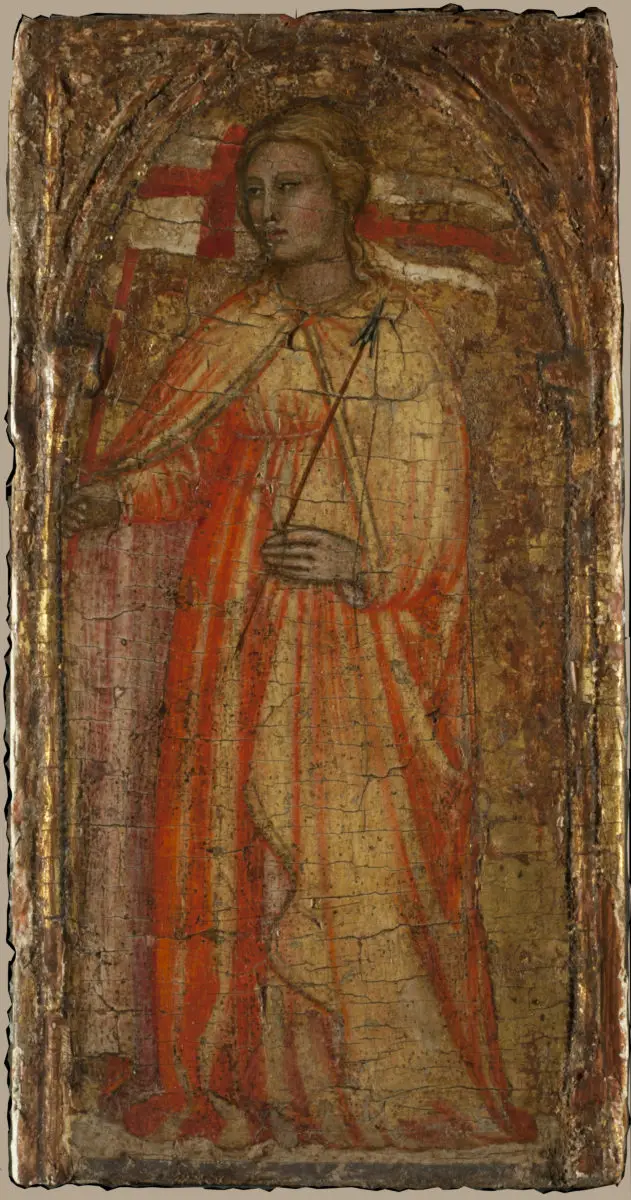
Much to her father’s surprise, Ursula, inspired by God in a dream, agreed to the marriage, but only on certain conditions:
- Each king would have to provide ten girls.
- Each girl was to be accompanied by a thousand others.
- The kings were to provide ships for a voyage.
- Ursula was to be given three years to devote herself to God.
- The young prince would receive Christian instruction for baptism.
Ursula thought that under these conditions the proposal would be withdrawn, but no, the king agreed and Ursula’s demands were immediately carried out.
Young people began to arrive from all directions to join the journey. During the journey Ursula converted all the girls to Christianity and soon they arrived in Cologne, Germany.
Here an angel appeared to Ursula and told her that she and all her companions would return to this place and win the crown of martyrdom. They went to Rome and Pope Cyriacus asked them to join Ursula’s group. They set off to return to Cologne.
Back in Britain, Etherius also decided to join them. They all met in Cologne, where they encountered the aggressive Huns, who were only interested in women for pleasure. Ursula and her daughters resisted being raped.
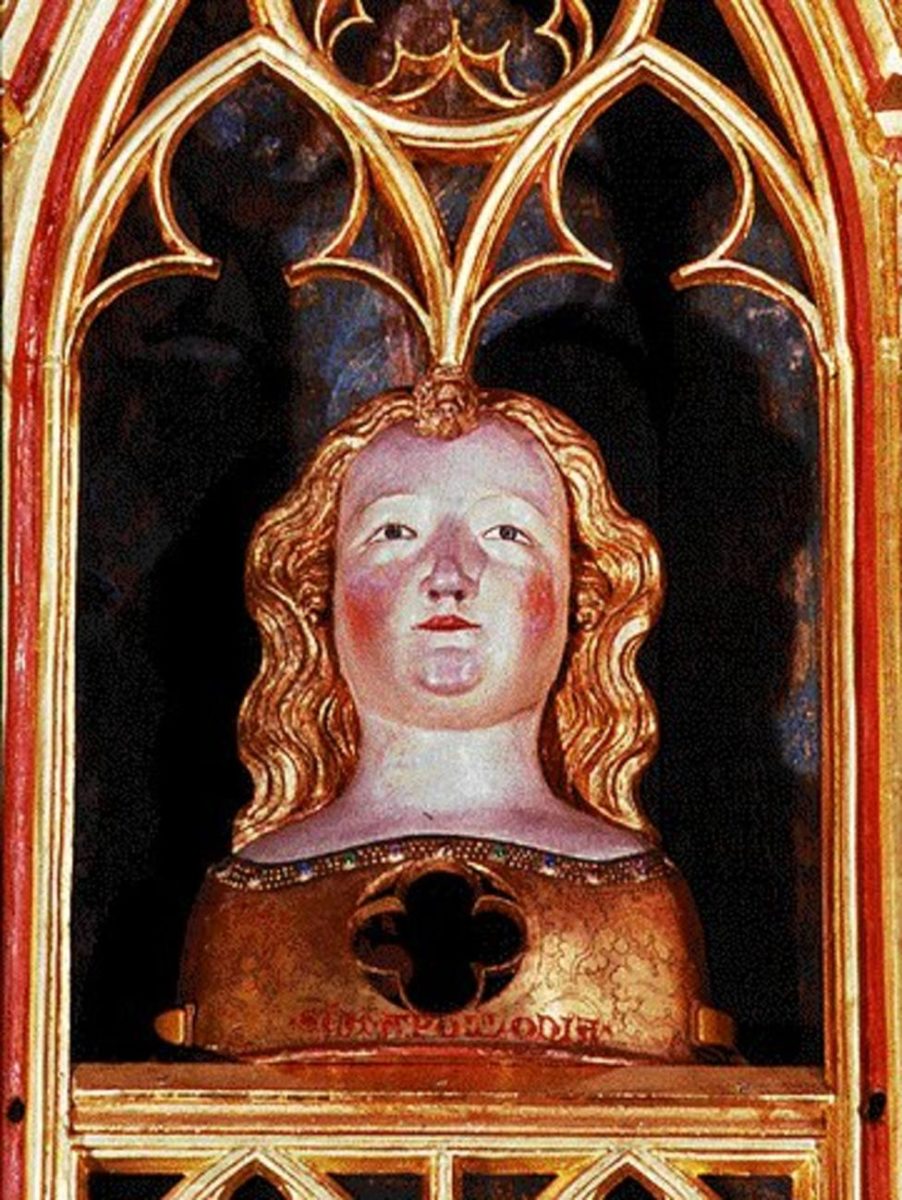
Julius, the leader of the Huns, ordered his army to kill everyone, including Eterius and the former Pope Cyriacus. Julius decided not to kill Ursula because he thought she was so beautiful and wanted to marry her.
Ursula refused his proposal because she wanted to fulfil the promise she had made to God to remain a virgin, like the Virgin Mary.
Julius was so enraged that he shot her with an arrow, which pierced her heart and killed her. According to legend, Ursula and her companions were martyred in Cologne.
It has also been suggested that Ursula was a Christianised form of the goddess Freya, who took the souls of dead virgins. Other 19th century scholars have referred to the goddesses Nehalennia, Nerthus and Holda.
Nothing reliable is known about the girls who were supposedly martyred at the site.
A commemoration of St Ursula and her companions in the Mass of St Hilarion, formerly in the General Roman Calendar on 21 October, was removed in 1969.
This was because “their passion is entirely fabulous: nothing is known, not even their names, about the Virgin and her virgins, who were killed in Cologne at an uncertain time”.
Nevertheless, they are mentioned in the Roman Martyrology, the official but incomplete list of saints recognised by the Catholic Church, which speaks of them as follows: “In Cologne in Germany, in commemoration of the virgin saints who ended their lives in martyrdom for Christ on the site where the city’s basilica was later built, dedicated to the innocent girl Ursula, who is considered their leader.”
Here is a video of the story of St Ursula so that you can learn a little about the life of this saint:
Saint Ursula Sanctuary
She is the patron saint of the British Virgin Islands, Cologne, Germany, the University of Paris, teachers, girls, bakers, orphans and archers.
She is invoked for a holy death, for the education of girls and women, against shipwrecks in rivers and for happy marriages.
His symbols are: arrows, cloak, ship, crown, pilgrim’s staff with white flag and red cross.
In this video you have the saint’s day of Saint Ursula, so you can learn more about what is done on this day:
How St Ursula is depicted in Christian art
It is useful to be able to recognise St Ursula in paintings, stained glass, illuminated manuscripts, architecture and other forms of Christian art.
Artistic representations reflect the life or death of saints, or an aspect of life with which the person is most closely associated.
St Ursula is depicted in Christian art as a princess, wearing a crown.
She holds an arrow in her hand, the attribute of her martyrdom, and carries a pilgrim’s staff topped by a white banner with a red cross, the Christian standard of victory.
Watch this video to see how Saint Ursula is represented in art:
Saint Ursula the Martyr
The story of St Ursula and the 11,000 virgin martyrs of Cologne is based on ten lines, although her legend and its many variants would fill more than a hundred pages. Like St Eulalia, she suffered martyrdom for her faith.
Her story comes from an ancient inscription carved on a stone, perhaps in the fifth century, and later placed in the choir of St Ursula’s Church in Cologne.
It states that a certain Clematius, a man of senatorial rank who seems to have lived in the East before coming to Cologne, was led by frequent visions to rebuild in that city, on land he owned, a basilica that had fallen into ruins, in honour of the virgins who had suffered martyrdom there.
Even the authenticity of this inscription is disputed, but there is no reason to doubt that the tradition of virgins martyred in Cologne is very old.
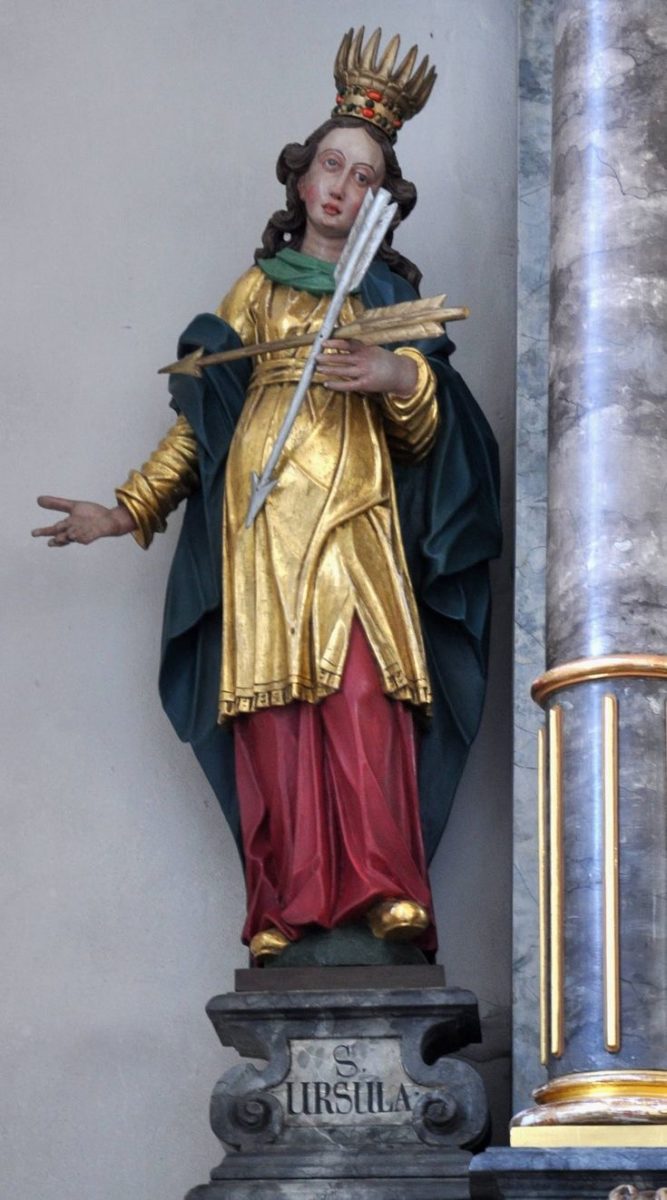
The inscription also testifies to the existence of an earlier basilica in Cologne, perhaps from the early 4th century. However, the inscription does not mention the number of virgins, their names or the date and circumstances of their martyrdom.
No other written record of these martyrs is found until the 9th century, when a preserved sermon speaks of several thousand martyrs who suffered persecution in Cologne during the reigns of Diocletian and Maximian (late 3rd century).
One of these martyrs is called Pinnosa. The martyrology of Wandalbert of Prüm, written around 850, also mentions several thousand virgins, while the martyrology of Usuard, written around 875, mentions “Martha and Saula with several others”. Another saint who appears in the martyrology is Saint Expeditus.
Neither of these mentions Ursula or the Huns. But at the beginning of the 10th century, the expression “11,000 virgins” appears. From then on, this number is accepted, as is the British origin of the saints, with Ursula replacing Pinnosa as their most important member.
The legend of the martyred virgins and their leader, Saint Ursula, is not mentioned by many of the eminent religious historians of the Migration Period and the Middle Ages, which casts doubt on its authenticity.

In fact, few histories mention the legend until the 9th century, and even then they often referred to a very small number of martyrs and omitted Ursula’s name as their leader.
However, this omission could also be due to the cultural decline and limited historical records in Europe after the fall of the Roman Empire during the Middle Ages, also known as the “Dark Ages”. Nevertheless, St Ursula is still honoured as a martyr.
Watch this video to find out why St Ursula is a martyr:
Prayer to Saint Ursula
O God, who hast given to the virgins consecrated to Thee the courage to face, with Ursula as their leader, a marvellous struggle through the palm of the cross,
and to attain the glory of heavenly contemplation,
We pray that we may be helped by the prayers of those whom you have made triumphant in heaven on this day, having passed through the gates of death.
Through our Lord Jesus Christ, who lives and reigns with God the Father, in the unity of the Holy Spirit, one God, world without end. Amen.
Short prayer to St Ursula
Through the merits of our Lord Jesus Christ, O God, accept the prayers offered to You through the intercession of Saint Ursula, faithful imitator of the virtues of the Heart of Your Son, and grant us the favours we confidently ask. Amen. Saint Ursula, pray for us!
We leave you this video with a prayer to Saint Ursula to solve the problems of love or infidelity of your partner:
Novena of Saint Ursula
This prayer should be said for nine consecutive days to ask for the intercession of God, Jesus and St Ursula for the solution of our problems or difficulties.
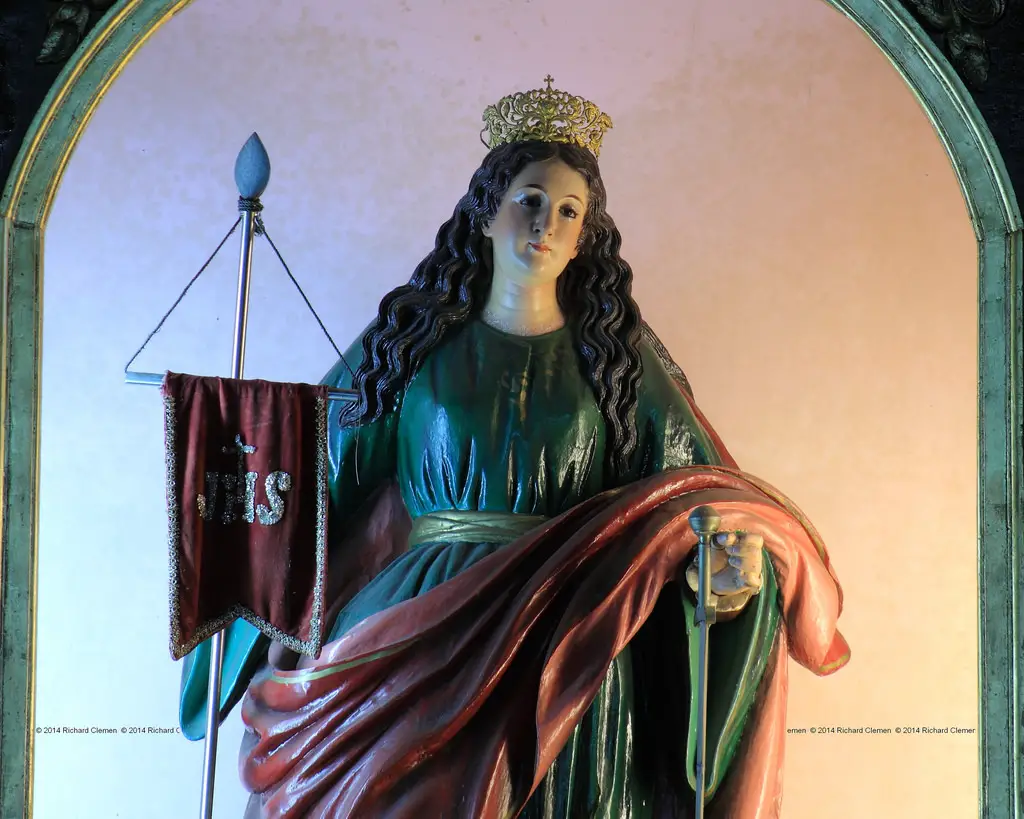
Daily prayer: My Lord Jesus, who with your heart-wrenching passion and death obtained the forgiveness of the human race and gave light to the planet with your exemplary life, we ask you to give us the grace we need to offer this novena with love in the name of your faithful servant, St Ursula.
And your gracious Lady, give us the joy that our Lord will grant us the favour we ask and deign to hear our prayers. Through Jesus, our Lord, Amen.
First day: O Saint Ursula, you were born in England, the cradle of the Christian faith. Daughter of Dionot, King of Cornuaille, and of Daria, both noble in heart and in blood. You were brought up to believe in Christ, and you were so bright and happy.
You who, with your noble heart and generosity, with your docile and virtuous soul, who, with your beauty, was one of the most beautiful princesses in Europe.
Most glorious Saint Ursula, who was born a queen and who, being beautiful, did not let this discourage her and never ceased to be humble and virtuous, we ask you to bring our prayer to the Lord through your humility. Through Jesus our Lord, Amen.
Second day: St. Ursula, you understood that the beauty of every Christian woman is to be modest and to despise the attractions of the court, and you met Our Lord Jesus, to whom you wanted to be his bride. You even had to suffer martyrdom.
O Saint Ursula, ever virgin, beloved of Jesus our Lord, who despised the luxuries of the world and united herself to the Lord, fill our hearts with love for God, so that when we die we may live at His side and have the joy of reaching heaven at Your side. Amen.

Third day: Saint Ursula, you were proposed to by Conan because of your beauty, you asked him to accept your baptism, and you took with you all the virgins you could to be part of your retinue and to achieve the conversion of these barbarians, but your heart belonged only to Jesus Christ.
To you, Saint Ursula, we turn in times of need, O blessed Virgin, and as you obediently and humbly fulfilled the word given by your Father, even when your soul only wanted to be married to God, grant us the virtue of obedience to carry out the works that God commands us to do. Amen.
Fourth day: Beloved Saint Ursula, who, trusting in the goodness of our Lord, knelt at His feet and asked Him to be your Master and your Heart, who was never tempted by the wonders of the world, and who, as the love of your life, would take from you the heavy burden that your Father wished for you.
We greet you, O happy Virgin, adorned with good virtue, who defended your holy virginity by offering it to God our Lord as a gift of your life, we ask you to give us the gift of chastity. Amen.
Fifth Day: Doing the works to take you by ship St. Ursula, and taking with you many other princesses and noble ladies to be your company, and whose destiny was to serve Christ, as their destiny London and teaching them how they should love and serve our Lord Jesus Christ.
O Virgin Saint Ursula, favoured daughter of God, who was the simplest of virgins, including those who accompanied you, give us the virtue to be your example and to follow you, so that we may obtain the gifts of being modest and discreet before God Our Lord. Amen.
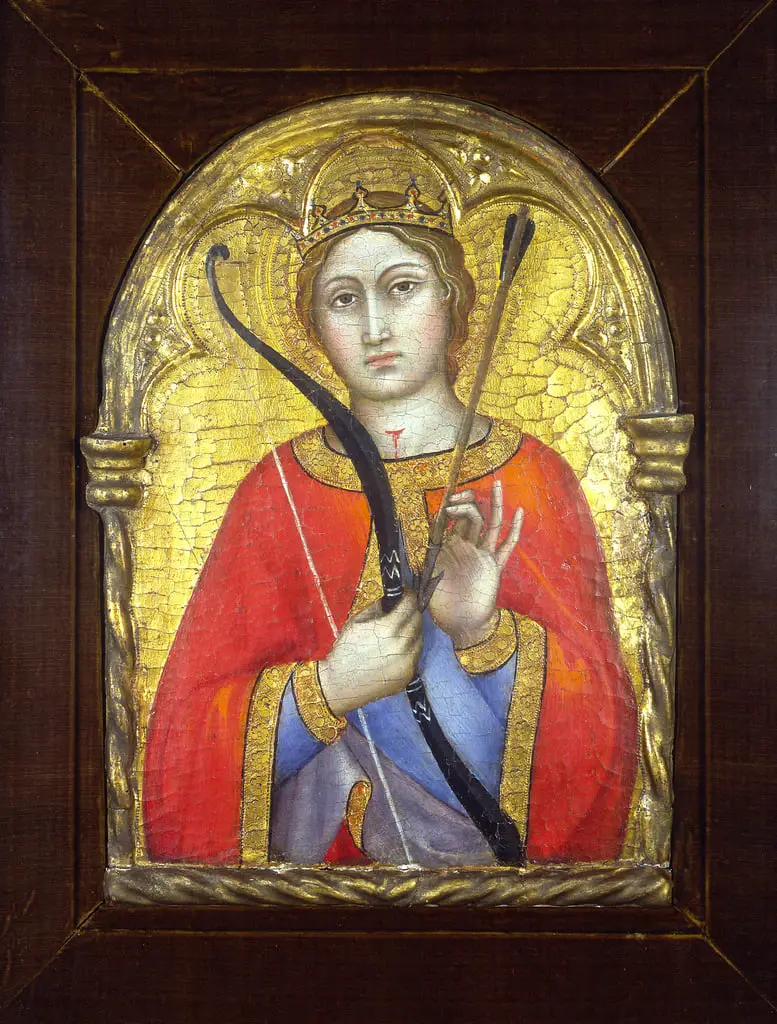
Sixth day: O Saint Ursula, that when you left England a terrible wind frightened all your company, for fear they might be shipwrecked, and you, with your great courage and faith, gave them courage and strength, for they served God Our Lord, and you knew that He would not allow anything to happen to them.
Glorious St. Ursula, who filled with hope the hearts of those who were in great distress when the storm struck your ship, we ask you to grant us the faith to triumph in the face of any event of any kind that may befall us in this life. Amen.
Seventh day: St. Ursula, who met the barbarian and pagan Huns, who destroyed everything for their own pleasure, and who attacked you and those who accompanied you, taking their lives and possessions, and were surprised to see that they were only women of Christ, with you at their head as their leader.
O Saint Ursula, who could have had the glorious joy of knowing that you would unite yourself to Christ, who filled your bosom with luminosity and faith, we ask you to give us the joy that our spirits may be filled every day with your virtue. Amen.
Eighth day: that when the barbarian Hun saw you, he was dazzled by your beauty and wanted you for himself alone, but because of your determination to serve Jesus Christ alone, and because he saw that the other virgins faithfully followed you, he ordered to take the life of each one of them, for they are holy in the sight of God because they suffered martyrdom and served God alone.
O Saint Ursula, Virgin of fortitude, who knew how to stop the barbarians’ attacks and who preferred to die rather than lose your virginity, which came only from Christ Jesus, we ask you to grant us the strength to overcome the temptations of all the enemies of the faith in Christ. Amen.
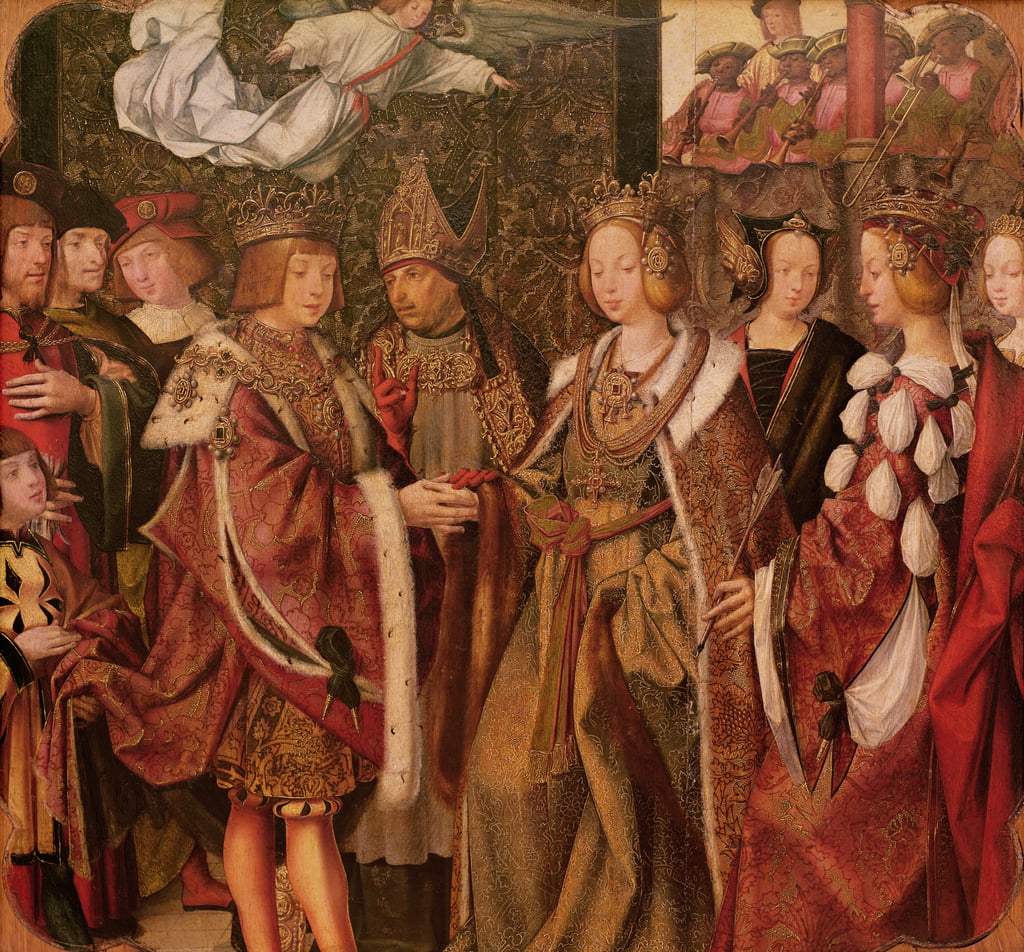
Ninth day: On 21 October 383 A.D. you triumphed over evil, and from then on you were known as Saint Martyr, together with your virgins, and their bodies were blessed with a holy burial in Cologne, where your relics are kept for all eternity.
O Saint Ursula, by your life full of virtue and by your holy death, we ask you to intercede before God our Lord and to make known to Him our needs and our sorrows, so that He may save our souls and lead us to the glory of being at His side. Amen.
At the end of each day we should pray three Our Fathers, three Hail Marys and three Glorias.
Church of St Ursula
It is known that the Roman Senator Clematius built the Church of St Ursula in Cologne in memory of the martyrs and their leader St Ursula, which later received the status of a basilica from the Pope in 1920.
This basilica has an inscription dating from the 4th or 5th century AD, about the same time as the Basilica of St Paul Outside the Walls, which indicates that the church was built by Clematius on the site of an ancient sacred monument, or the same site as the Roman cemetery that housed the bones of St Ursula and the 11,000 virgins, for whom they are still enshrined in the basilica.
However, it has been suggested that the number of martyrs may not have been as high as the 9th century figure and may have been the result of a translation error rather than a mass murder.
One theory is that there was only one martyr, called Undecimilla, which was mistakenly translated into Latin as Undicimila, or 11,000. Another theory, by an 8th-century historian, is that among the martyrs was an 11-year-old girl called Ursula, who was called Undecimilla because of her age, hence the error.
Watch this video about the altarpiece in St Ursula’s Basilica that tells the story of the 11,000 virgins:
These contradictory accounts and the lack of solid evidence for the alleged martyrdom of Ursula and the 11,000 virgins meant that they were omitted from the Catholic calendar of saints when it was revised in 1969.
The Basilica of St Ursula in Cologne houses the supposed relics of Ursula and her 11,000 companions. It contains what has been described as “a veritable tsunami of ribs, shoulder blades and thighs arranged in zigzags and swirls, even in the shape of Latin words”.
The Golden Chamber, a 17th-century chapel attached to the Basilica of St Ursula, contains sculptures of their heads and torsos, some of which are covered with silver, others with gold and caps of gold cloth and velvet, and loose, coarsely textured bones from the upper walls.
The peculiarities of the relics themselves have cast doubt on the historicity of Ursula and her 11,000 virgins. In 1183, the skeletons of infants aged between two months and seven years were found buried with one of the holy virgins.
Hermann Joseph, a canon at the time, explained that they were distant relatives of the eleven thousand. An eminent surgeon was banished from Cologne for suggesting that among the collection of bones said to belong to the heads were several belonging to adult mastiffs. The relics may have come from a forgotten cemetery.
Even the City of London has its own so-called memorial. The street, called St Mary Axe, is named after an old church built in honour of St Mary, St Ursula and the 11,000 virgins. In the early 16th century it was rumoured that one of the axes used by the murderous Huns was kept in the church.
Whether Ursula existed or not, she has captivated the world for centuries.
This video shows the interior of St Ursula’s Basilica in Cologne, Germany:
Order of the Ursulines
The legend of St Ursula led to her being venerated throughout Europe until relatively recently. The cult of Ursula and the 11,000 virgins was widespread, reaching as far as India and China.
The 12th century abbess Hildegard of Bingen composed several hymns in honour of St Ursula. Many churches and shrines were dedicated to her. Christopher Columbus named the Virgin Islands after Ursula and her virgins.
On 21 October 1521, Ferdinand Magellan rounded Cape Virgins and entered the Strait of Magellan, christening the cape with Ursula’s virgins.
In this video you have a conference about Saint Ursula in Madrid:
Angela Merici founded the order of Ursuline Sisters in Italy in 1535. At that time the story of Ursula was very popular and people would have listened to Ursula, been inspired by her and prayed to her.
Angela called young women to a life of virginity and service to others. She chose Ursula as a model for herself and her companions, which is why we still know them as Ursulines.
Just as God called Angela and her companions, he invites women today to say yes to the call to dedicate their lives to him in the spirit of Angela Merici, just as he does with consecrated virgins.
The Ursuline Order, dedicated to the education of girls, helped to spread the name and veneration of St Ursula throughout the world. As a result, Ursula became the patron saint of students.
She is also traditionally the patron saint of the British Virgin Islands, Catholic education, the city of Cologne, educators, the Holy Death, schoolchildren, teachers and the University of Paris.
The story of St Ursula is now considered to be fictional, and in 1969 Pope Paul VI suppressed her cult as part of a wider revision of the Catholic canon of saints.
Watch this video about Angela Merici, the founder of the Ursuline Sisters:



